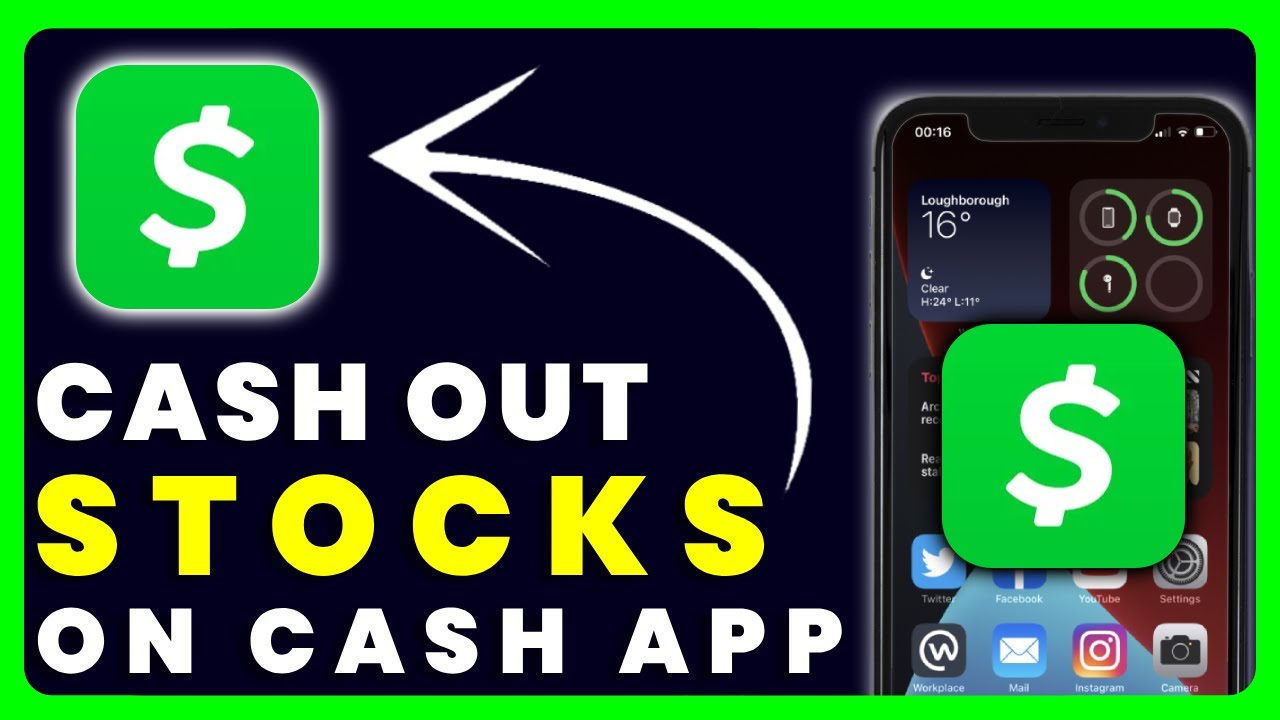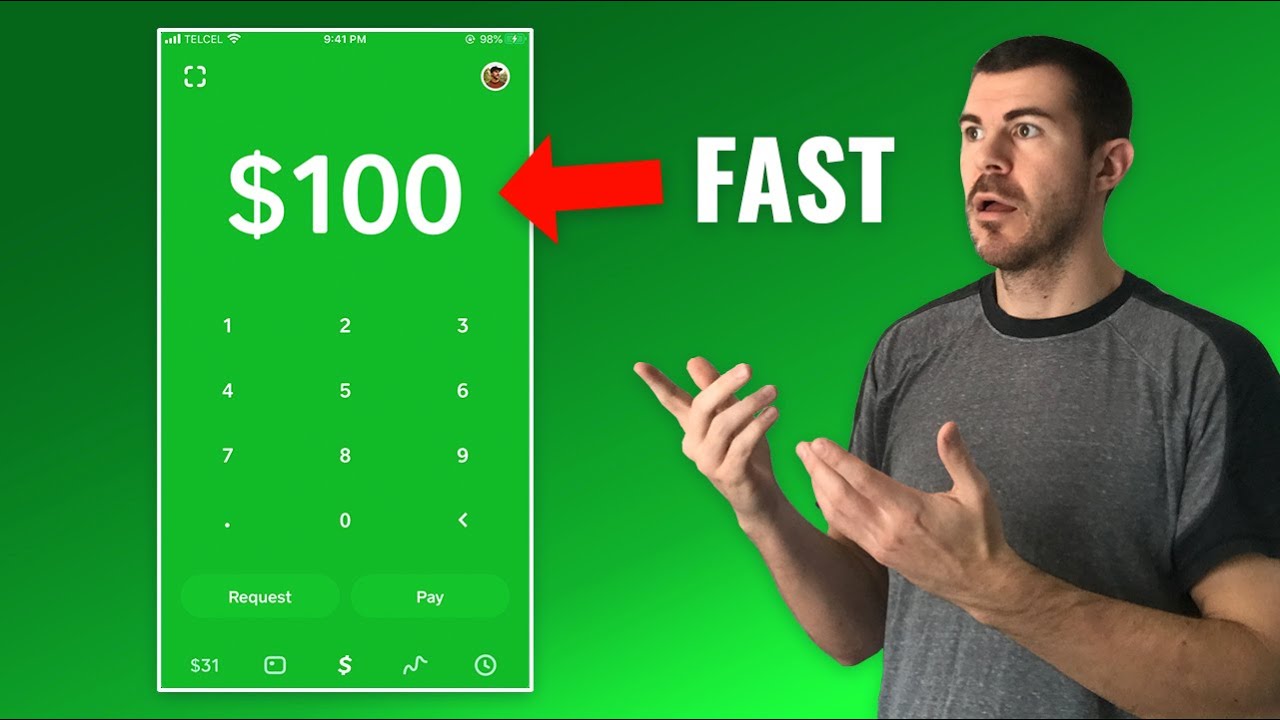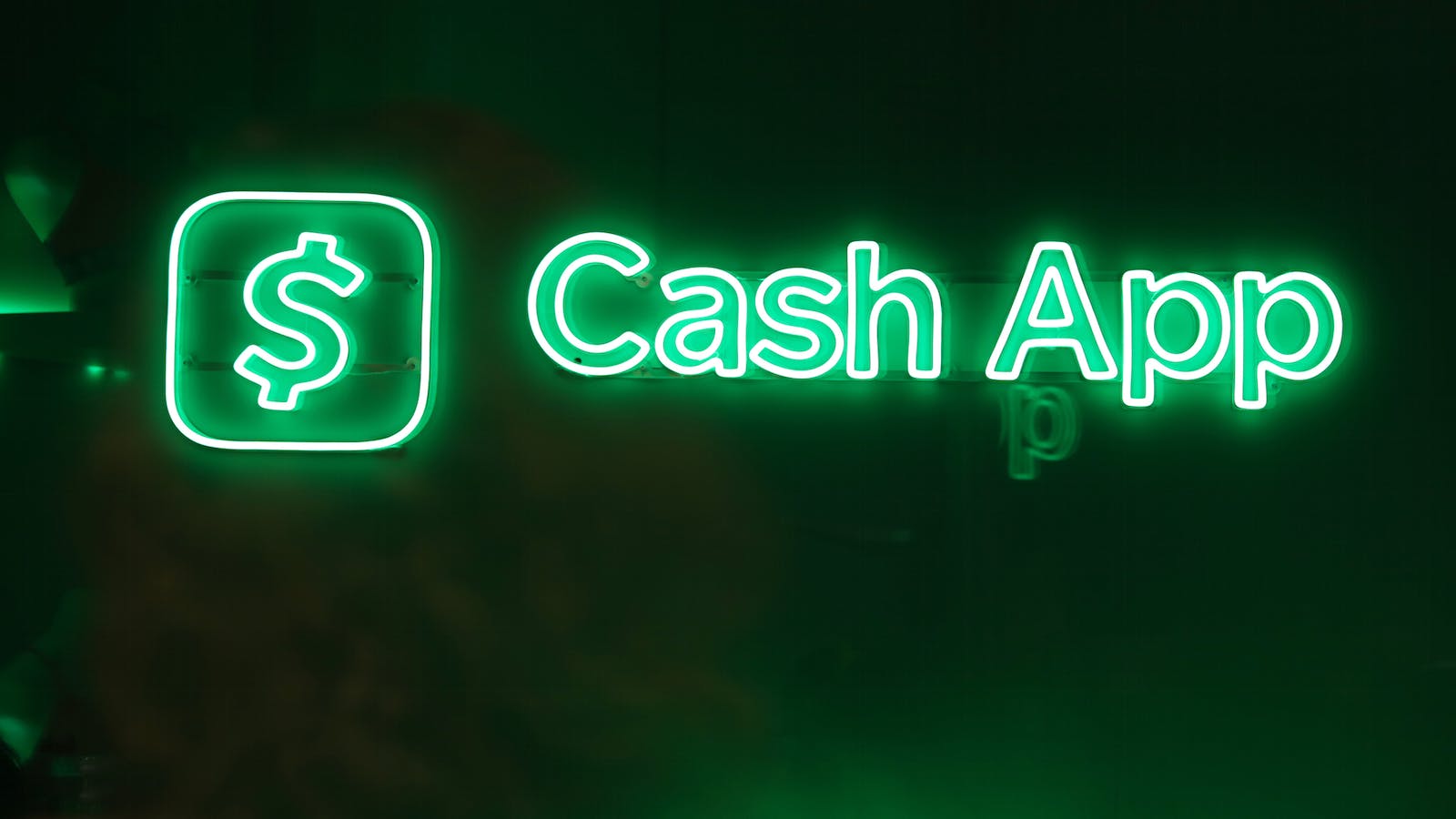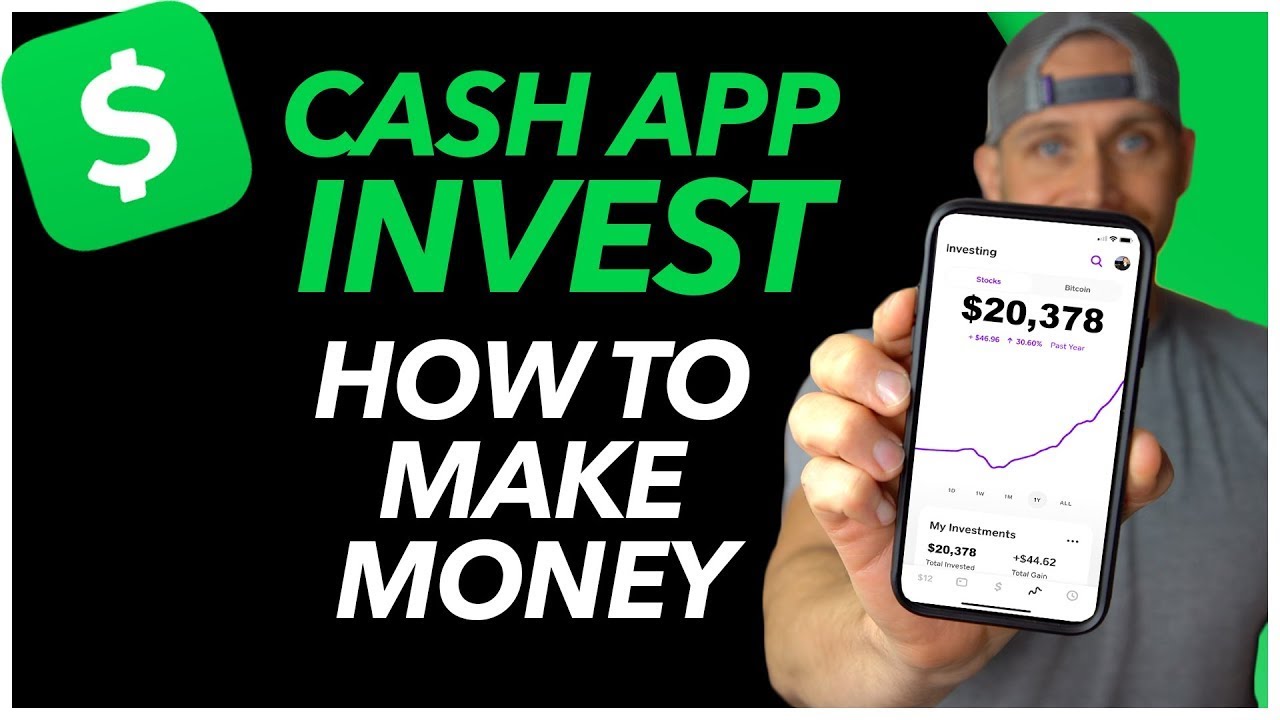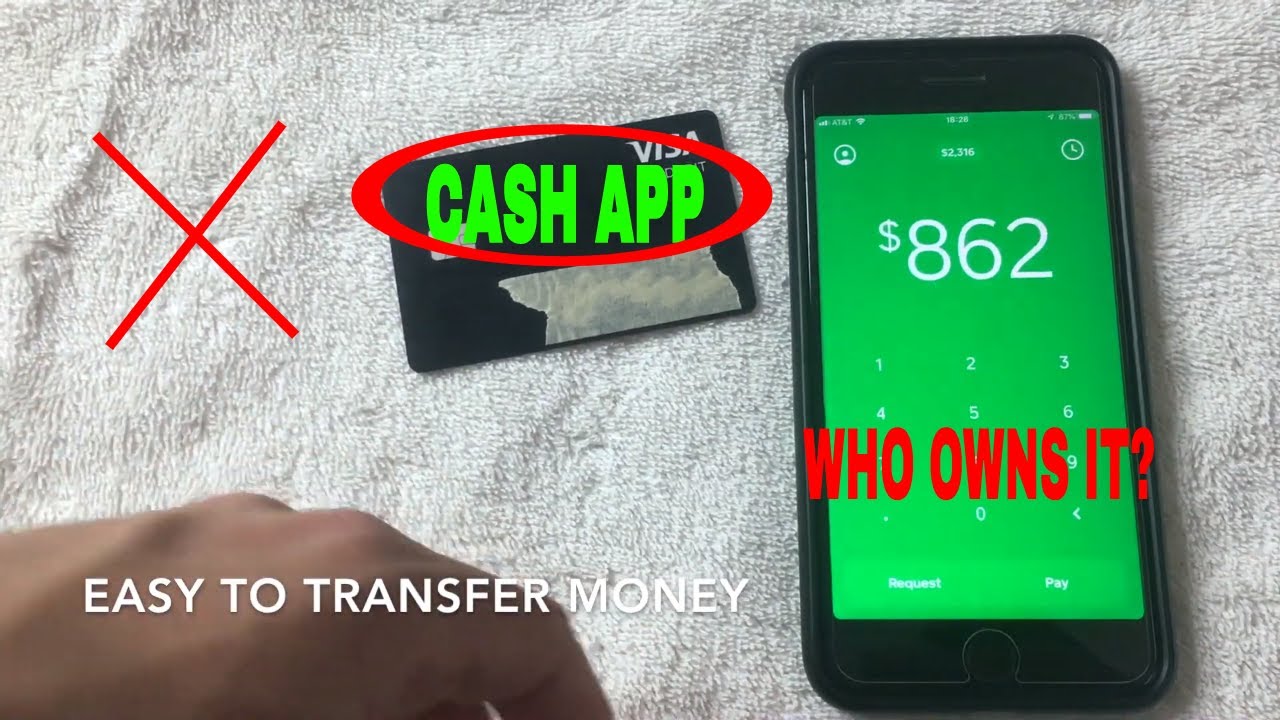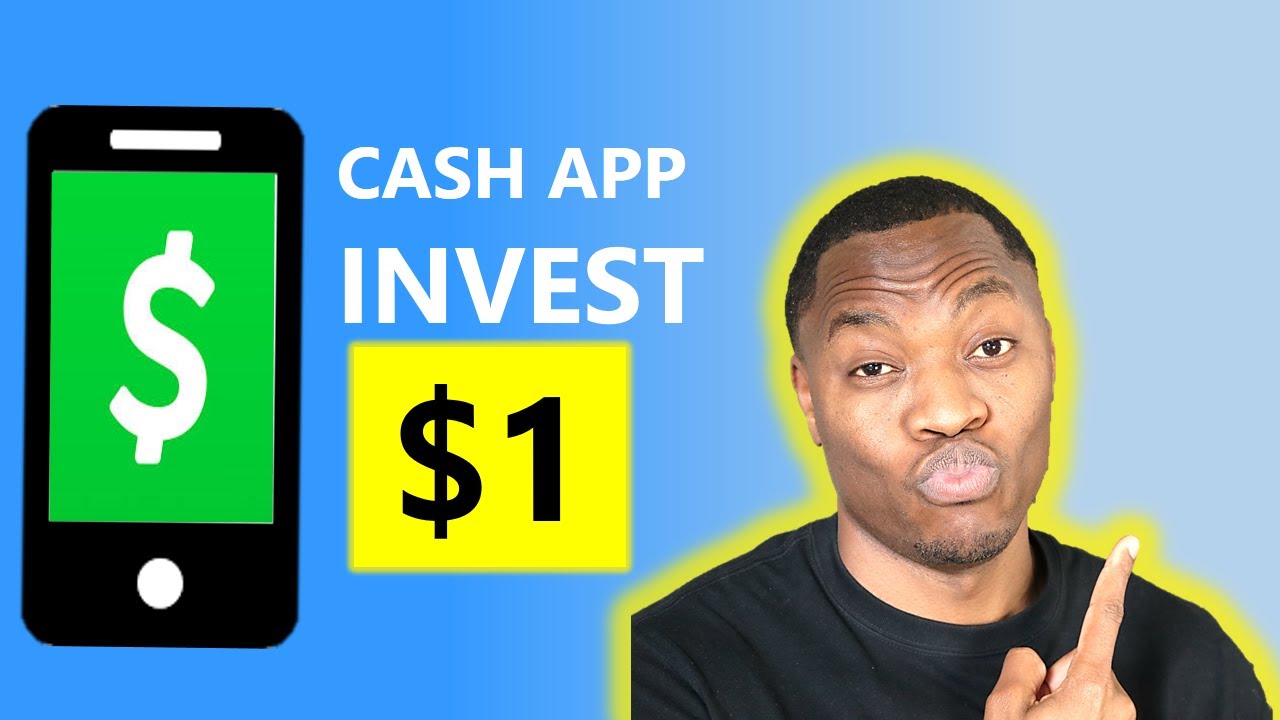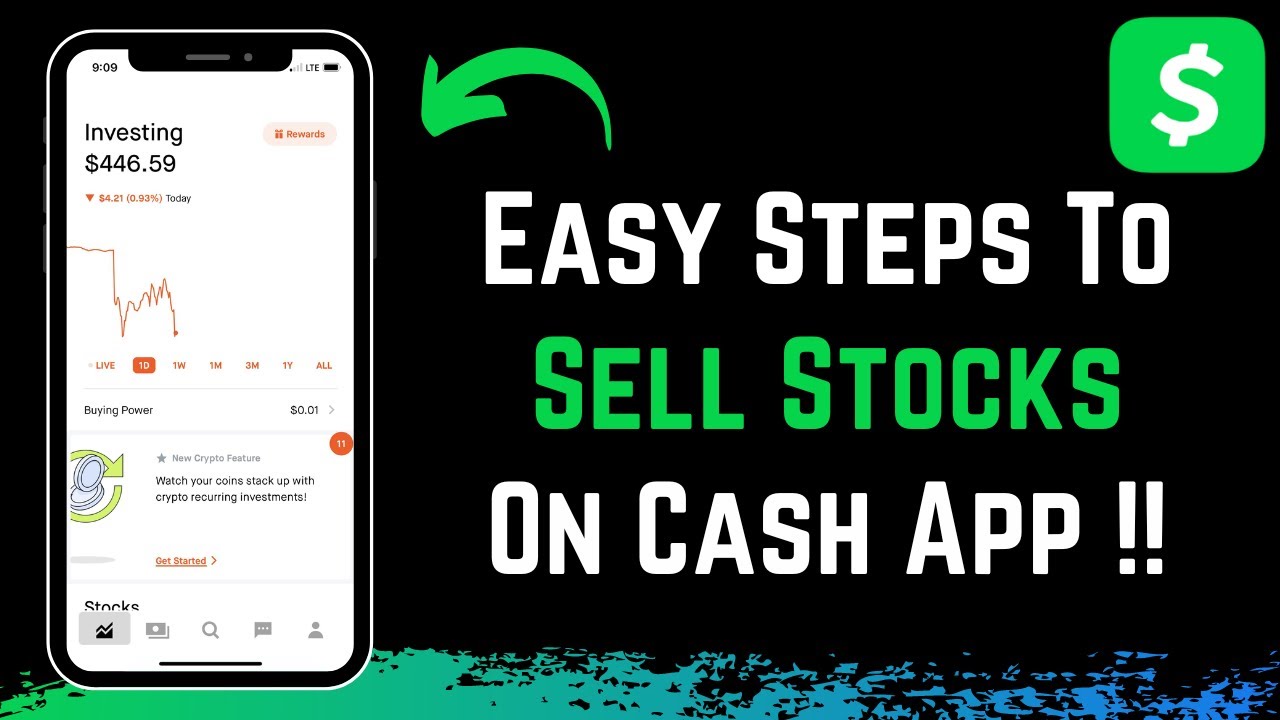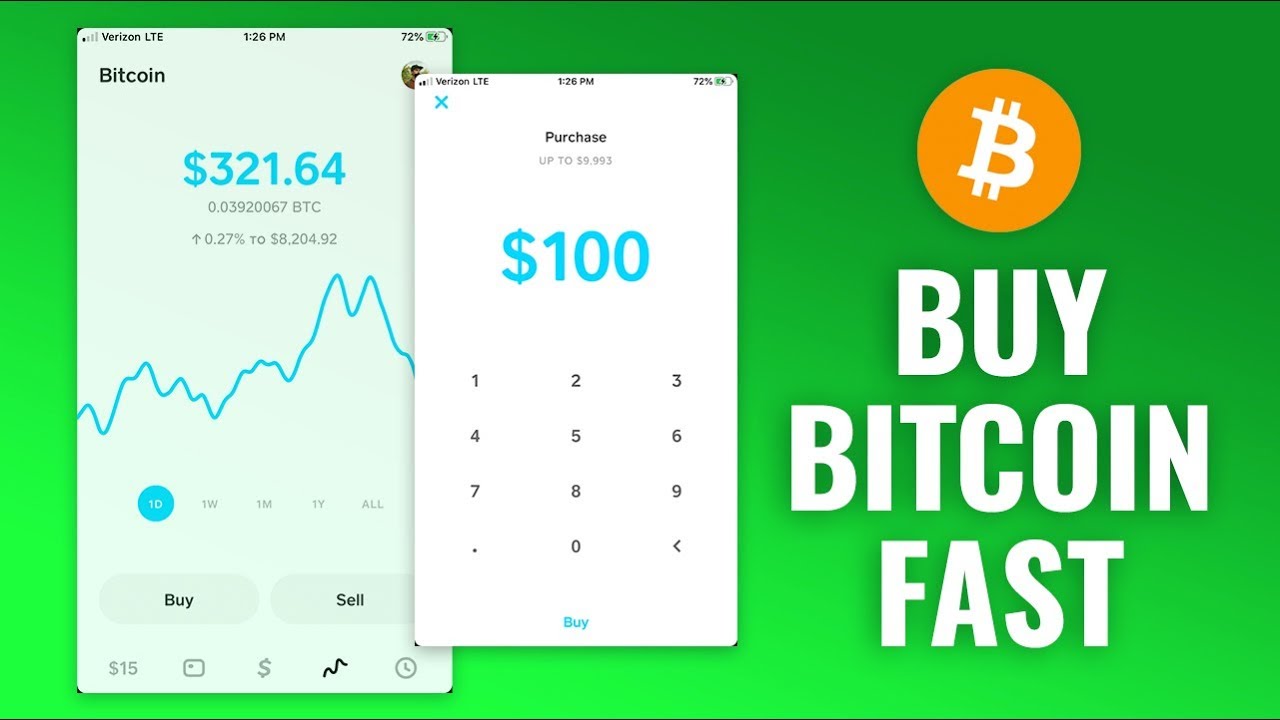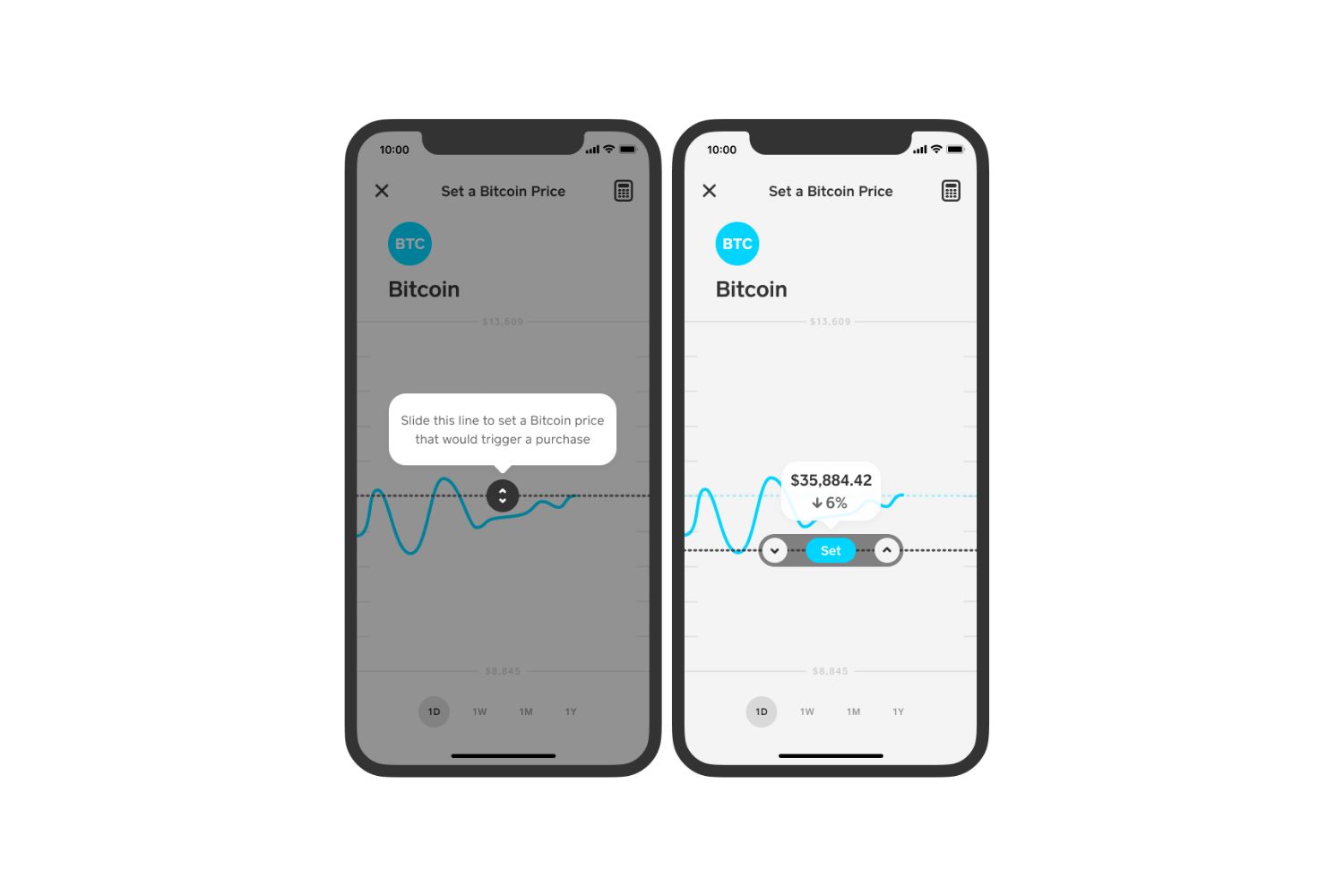Introduction
Welcome to the world of Cash App – a convenient mobile payment service that allows you to send, receive, and invest money with just a few taps on your smartphone. If you’re looking to cash out your investments on Cash App, you’ve come to the right place. In this guide, we’ll walk you through the steps to cashing out and provide you with some valuable insights along the way.
Whether you’re a seasoned investor or a beginner exploring the world of stock trading, Cash App offers a user-friendly platform to invest your money in stocks, ETFs, and even Bitcoin. However, if you decide it’s time to cash out your investments and convert them back into cash, Cash App makes the process seamless and hassle-free.
Before we delve into the details, it’s important to note that investing always carries some level of risk. It’s crucial to have a solid understanding of the market and the potential outcomes of your investment decisions. Conduct thorough research, seek advice from financial professionals, and carefully assess your risk tolerance before diving into any investment.
Now, let’s walk you through the process of cashing out your investments on Cash App. Whether you’re looking to liquidate your entire portfolio or withdraw only a portion of your funds, Cash App allows you to do so with ease. By following a few simple steps, you can quickly and securely convert your investments back into cash.
Throughout this guide, we’ll provide detailed instructions on setting up your Cash App account, depositing funds, investing, understanding your investments, and, most importantly, how to cash out. We’ll also cover important factors such as withdrawal fees and limits to ensure you have a complete understanding of the process.
So, let’s get started and equip you with the knowledge needed to cash out your investments on Cash App. Whether you’re planning a major financial move or simply want to explore your options, Cash App offers a convenient platform to help you achieve your investment goals.
Setting Up Your Cash App Account
Before you can start cashing out your investments on Cash App, you’ll first need to set up an account. If you haven’t done so already, don’t worry – the process is quick and straightforward.
To begin, visit the App Store (for iOS devices) or the Google Play Store (for Android devices) and search for “Cash App”. Download and install the app on your smartphone.
Once the app is installed, open it and click on the “Sign Up” button. You’ll be prompted to enter your phone number or email address. Choose the option that is most convenient for you and follow the on-screen instructions to verify your contact information.
Next, you’ll be asked to create a unique Cashtag. Your Cashtag serves as your Cash App username and can be used by others to send you money. Choose a Cashtag that is easy to remember and unique to you. Keep in mind that Cashtags are permanent and cannot be changed, so choose wisely.
After creating your Cashtag, you’ll be prompted to link your debit card or bank account to your Cash App. This is necessary for depositing funds and cashing out later on. Follow the instructions to securely link your preferred payment method to your account.
Once your payment method is linked, you’ll have the option to enable additional security features such as Touch ID, Face ID, or a unique Cash App PIN. These measures add an extra layer of protection to your account and ensure that only authorized individuals can access your funds.
With your account successfully set up, you’re now ready to deposit funds and start investing on Cash App. The process of depositing funds is simple, and we’ll guide you through it in the next section.
Remember, it’s important to keep your Cash App account information secure and to never share it with anyone. Cash App will never ask for your account password or PIN through email, phone calls, or social media. If you receive any suspicious messages requesting this information, report them to Cash App immediately.
Now that your Cash App account is up and running, it’s time to deposit funds and get started with your investment journey.
Depositing Funds into Your Cash App Account
Now that you have your Cash App account set up, it’s time to deposit funds so that you can start investing. Cash App provides multiple options for depositing money into your account, making it convenient and accessible for users.
The first option is to link your debit card to your Cash App account. To do this, tap on the profile icon on the Cash App home screen and select “Add Credit Card”. Enter your card details, including the card number, expiration date, and CVV, and follow the prompts to link your card securely. Once linked, you can transfer funds from your linked debit card to your Cash App account instantly.
If you prefer to link your bank account to Cash App, you can do so by tapping on the profile icon, selecting “Add Bank”, and following the instructions to link your account securely. Linking your bank account allows you to transfer funds directly from your bank to your Cash App account, providing an additional option for depositing funds.
Another convenient option for depositing funds is through direct deposit. Cash App provides users with a unique account and routing number, which you can provide to your employer or anyone else who wants to send money directly to your Cash App account. This method allows for easy and direct transfer of funds into your Cash App balance.
Additionally, Cash App offers the option to add funds using cash at one of its partnering retail locations. To do this, visit a participating retailer, provide your Cash App account details, and deposit the desired amount in cash. The funds will be added to your Cash App balance and available for investing.
It’s important to note that Cash App charges a 1.5% fee for instant deposits, which is applicable when transferring funds from your debit card to your Cash App account. However, standard deposits, such as linking your bank account or using direct deposit, are free of charge.
With your funds successfully deposited into your Cash App account, you can now explore the various investment options available and start growing your portfolio. In the next section, we’ll explain how to invest on Cash App and provide insights to help you make informed investment decisions.
Investing on Cash App
Cash App provides users with a user-friendly platform to invest their money in a variety of assets, including stocks, ETFs (Exchange-Traded Funds), and even Bitcoin. Investing on Cash App offers a convenient and accessible way to grow your wealth and potentially generate a return on your investment.
To start investing, open the Cash App on your smartphone and tap on the “Investing” tab at the bottom of the screen. This will take you to the available investment options. Cash App offers a selection of popular stocks and ETFs for you to choose from.
When investing on Cash App, it’s important to conduct thorough research and assess the potential risks and rewards of each investment. Cash App provides some essential information about each stock or ETF, including the company name, stock ticker symbol, and current price. You can also access additional information such as performance charts, company news, and analyst ratings.
To explore the available investment options, scroll through the list and select the stock or ETF you’re interested in. Cash App provides the option to invest in fractional shares, meaning you can purchase a portion of a share rather than the full share. This opens up access to investments that might have a higher price per share, making them more affordable for individual investors.
Once you’ve chosen your investment, you’ll be prompted to enter the amount of money you want to invest. Cash App will provide an estimate of the fractional share or number of shares you’ll be purchasing based on the amount you entered. Take note of any transaction fees associated with the investment, as these will be deducted from your Cash App balance.
After reviewing your investment details, including the estimated purchase price and any associated fees, you can confirm the investment. Cash App will process the transaction, and the investment will be reflected in your portfolio. You can monitor the performance of your investments and track their value within the “Investing” tab of the Cash App.
It’s important to note that investing involves risks, and the value of investments can fluctuate. It’s essential to have a long-term perspective, diversify your investments, and consult with a financial advisor if needed. Cash App’s user-friendly interface and accessible investment options make it a great platform for beginners and experienced investors alike.
Now that you understand how to invest on Cash App, the next section will guide you through understanding your investments and monitoring their performance.
Understanding your Investments
Once you’ve started investing on Cash App, it’s important to have a good understanding of your investments and how they perform. By staying informed about your portfolio, you can make informed decisions and potentially maximize your returns.
Cash App provides users with a clear and intuitive interface to monitor and track their investments. You can access your portfolio by tapping on the “Investing” tab at the bottom of the screen. Within this section, you’ll find a comprehensive overview of your investments, including the current value of your portfolio, the percentage change in value, and a breakdown of each investment you own.
When reviewing your portfolio, it’s important to pay attention to the performance of your investments. Cash App provides information about the price at which you purchased each investment, the current market price, and the percentage change in value. This allows you to assess how your investments are performing over time.
In addition to the performance metrics, Cash App offers useful tools such as interactive charts, company news, and analyst ratings. These resources can help you understand the factors influencing your investments and stay updated on any notable developments or news that may impact their value.
Remember that investing involves risk, and the value of your investments can fluctuate. It’s important to have a long-term perspective and not get swayed by short-term market movements. However, regularly reviewing your investments and staying informed about the companies or assets you’ve invested in can help you make informed decisions and potentially adjust your investment strategy if needed.
Cash App also provides the option to sell your investments directly from the app. If you decide to make changes to your portfolio, you can easily sell all or a portion of your investments. Simply navigate to the investment you want to sell within the “Investing” tab and follow the prompts to sell. The proceeds from the sale will be reflected in your Cash App balance, and you can choose to cash out these funds or reinvest them as you see fit.
Understanding your investments on Cash App is a crucial aspect of managing your portfolio effectively. By staying informed about the performance of your investments, utilizing the available resources, and periodically reviewing your investment strategy, you can make informed decisions and potentially maximize your investment returns.
Now that you have a clear understanding of your investments, let’s dive into the process of cashing out your investments on Cash App and turning them into cash.
Cashing Out your Investments
When the time comes to convert your investments back into cash, Cash App makes the process of cashing out quick and hassle-free. Whether you want to liquidate your entire portfolio or withdraw only a portion of your funds, Cash App provides a straightforward method to cash out your investments.
Before you initiate the cash out process, it’s important to review the performance of your investments and assess your financial goals. Consider factors such as the current market conditions and any potential fees associated with cashing out to make an informed decision.
To begin cashing out your investments on Cash App, navigate to the “Investing” tab and tap on the investment you wish to cash out. Within the investment details, you’ll find an option to sell. By selecting the sell option, you can choose to cash out all of your investment or specify a desired portion to sell.
Once you’ve determined the amount you want to cash out, Cash App will show you the estimated proceeds based on the current market price and any associated fees. Review the details carefully and ensure they align with your expectations before proceeding.
Upon confirming the cash out transaction, the proceeds from the sale will be reflected in your Cash App balance. From there, you have the option to withdraw the funds to your linked bank account, use them for spending through your Cash Card, or keep the funds in your Cash App balance for future investments or transactions.
It’s important to note that Cash App may charge a fee for certain withdrawal options. For example, if you choose to instantly transfer the funds from your Cash App balance to your linked bank account, a standard 1.5% fee will be applied. However, in some cases, you may have the option to wait a few business days for the transfer to be processed without incurring the fee.
Additionally, there may be specific withdrawal limits that apply to your Cash App account. These limits can vary depending on factors such as your account status, verification level, and transaction history. It’s important to familiarize yourself with the withdrawal limits on your account to avoid any surprises during the cash out process.
By understanding the cash out process on Cash App, you can confidently convert your investments back into cash when the time is right. Whether you’re looking to access your funds for other purposes or take advantage of new investment opportunities, Cash App provides a seamless way to liquidate your investments.
Now that you know how to cash out your investments on Cash App, let’s explore the steps to follow and important considerations when cashing out.
Steps to Cashing Out on Cash App
Cashing out your investments on Cash App is a straightforward process that can be completed in just a few simple steps. By following these steps, you can convert your investments back into cash and access the funds for other purposes or investment opportunities.
Here is a step-by-step guide to cashing out on Cash App:
- Navigate to the “Investing” tab on the Cash App home screen.
- Select the investment you want to cash out by tapping on it.
- In the investment details, choose the sell option. You will have the option to sell the entire investment or specify a portion to sell.
- Review the estimated proceeds from the sale based on the current market price and any associated fees.
- Confirm the cash out transaction.
- Once the sale is complete, the proceeds will be reflected in your Cash App balance.
- From your Cash App balance, you can choose to withdraw the funds to your linked bank account, use them for spending through your Cash Card, or keep them in your Cash App balance for future transactions.
It’s important to note that there may be fees associated with certain withdrawal options. For example, if you choose to instantly transfer the funds from your Cash App balance to your linked bank account, a fee of 1.5% may apply. However, you may have the option to wait a few business days for the transfer to be processed without incurring the fee.
Additionally, keep in mind any withdrawal limits that may apply to your Cash App account. These limits can vary and may be based on factors such as your account status, verification level, and transaction history. Make sure to familiarize yourself with the withdrawal limits to avoid any surprises during the cash out process.
By following these steps and considering any associated fees or withdrawal limits, you can confidently cash out your investments on Cash App and access the funds as desired.
Next, let’s dive into choosing the right timing to cash out your investments on Cash App and explore important considerations to keep in mind.
Choosing a Time to Cash Out
Choosing the right time to cash out your investments on Cash App is crucial in maximizing your returns and achieving your financial goals. While the decision ultimately depends on your individual circumstances and investment strategy, there are several factors you should consider when determining the optimal timing for cashing out.
Here are some key considerations to keep in mind:
- Market Conditions: Assess the current market conditions and the performance of your investments. If you believe the market is experiencing a bull run or if your investments have reached your target price, it may be a favorable time to cash out.
- Financial Goals: Evaluate your financial goals and the purpose of your investment. If you need the funds for an upcoming expense or if you’ve achieved your desired return, it may be wise to cash out and secure your gains.
- Risk Tolerance: Consider your risk tolerance and investment strategy. If you have a lower risk tolerance and prefer to lock in profits rather than expose yourself to market volatility, cashing out at an opportune time might be more suitable.
- Portfolio Diversification: Review the diversification of your investment portfolio. Cashing out certain investments can provide an opportunity to rebalance your portfolio and allocate funds to other investments or asset classes.
- Upcoming Events: Take into account any upcoming events or news that may impact the market or specific investments. Understanding potential catalysts or risks can help you time your cash out decision more effectively.
It’s important to note that trying to time the market perfectly is challenging, if not impossible. Market trends and fluctuations are difficult to predict accurately, and attempting to do so can result in missed opportunities or losses. It’s often more prudent to focus on your long-term investment objectives and make a decision based on thorough analysis and informed judgment.
Consulting with a financial advisor or taking advantage of the research and analysis tools available on Cash App can provide valuable insights into market conditions and help you make more informed decisions about cashing out your investments.
Ultimately, the decision to cash out your investments on Cash App should align with your financial goals, risk tolerance, and market analysis. By carefully assessing these factors and considering your individual circumstances, you can choose the optimal time to convert your investments into cash.
Now that you understand the considerations for timing your cash out, let’s move on to the final steps in the cash out process on Cash App.
Confirming and Completing the Cash Out Process
Once you have made the decision to cash out your investments on Cash App and have chosen the right timing, it’s time to confirm and complete the cash out process. By following these final steps, you can successfully convert your investments into cash and access your funds.
Here is how to confirm and complete the cash out process on Cash App:
- Review your investment portfolio and determine the specific investments you want to cash out. Consider factors such as performance, market conditions, and your financial goals.
- Navigate to the “Investing” tab on Cash App and select the investment you wish to cash out.
- Tap on the sell option within the investment details. You may have the option to sell the entire investment or specify a portion to cash out.
- Confirm the details of the cash out transaction, including the estimated proceeds and any associated fees. Take a moment to review the information and ensure it aligns with your expectations.
- If you are satisfied with the transaction details, proceed to confirm the cash out. This will initiate the sale of your investment and convert it into cash.
- Once the sale is complete, the proceeds from the cash out will be reflected in your Cash App balance. You can access these funds for withdrawal, spending with the Cash Card, or future investments.
It’s important to keep in mind that the timing of when the cash out proceeds will be available in your Cash App balance can vary. In some cases, it may take a short period for the funds to be processed and reflected in your balance.
After completing the cash out process, you can choose to withdraw the funds to your linked bank account, spend them using your Cash Card, or keep them in your Cash App balance for future transactions or investments. Cash App provides a range of options to help you manage and utilize your cash out proceeds according to your needs and preferences.
Remember to review any withdrawal fees and limits that may apply to your Cash App account, as these could impact your cash out experience. Being aware of these factors ensures that you have a clear understanding of the costs and constraints associated with accessing your cash out proceeds.
By following these steps to confirm and complete the cash out process on Cash App, you can efficiently convert your investments into cash and gain access to your funds for further financial decisions.
Now that you’ve completed the cash out process, let’s explore any withdrawal fees and limits you should be aware of.
Withdrawal Fees and Limits
When it comes to withdrawing funds from your Cash App account after cashing out your investments, it’s important to be aware of any potential withdrawal fees and limits that may apply. Understanding these factors can help you plan your cash out strategy effectively and avoid any unexpected costs.
Cash App provides users with various options for withdrawing their funds, such as transferring to a linked bank account, using the Cash Card for spending, or keeping the funds in their Cash App balance. Here are some key considerations regarding withdrawal fees and limits on Cash App:
1. Instant Transfers: If you choose to instantly transfer the funds from your Cash App balance to your linked bank account, a standard fee of 1.5% will be applied. This means that if you cash out $100, a fee of $1.50 will be deducted, and you will receive $98.50 in your bank account. Keep in mind that the availability of instant transfers may vary depending on your account status and transaction history.
2. Free Transfers: While instant transfers incur a fee, Cash App also provides an option for free transfers to your linked bank account. This method may take a few business days to process, but it allows you to avoid the 1.5% fee. If you’re not in a rush to access your cash out proceeds, this can be a cost-effective choice.
3. Cash Card Transactions: If you prefer to use your Cash Card for spending, you can make purchases or withdrawals from ATMs using the funds in your Cash App balance. However, keep in mind that any transaction fees or limits imposed by the ATM operator or merchant will apply.
4. Daily and Weekly Limits: Cash App imposes certain limits on withdrawals to ensure the security of your account. The specific limits can vary depending on factors such as your account verification level, transaction history, and account status. It’s important to be aware of these limits to avoid any inconvenience when accessing your cash out proceeds.
By understanding the withdrawal fees and limits on Cash App, you can make informed decisions about how and when to access your cash out proceeds. It’s important to review and consider these factors in conjunction with your financial goals and needs.
Keep in mind that it’s always a good practice to regularly review the terms and conditions of Cash App, as fees and limits may be subject to change. Staying informed will help you navigate the withdrawal process smoothly and make the most of your cash out experience.
Now that you’re familiar with the withdrawal fees and limits, let’s wrap up this guide with a summary of the key points discussed throughout.
Conclusion
Cashing out your investments on Cash App can be a seamless and convenient process, allowing you to convert your investments back into cash for various financial needs. By following the steps outlined in this guide and considering important factors such as market conditions, financial goals, and withdrawal fees, you can confidently navigate the cash out process and access your funds.
Setting up your Cash App account is the first step, ensuring that you have a secure and easily accessible platform for your investments. Depositing funds into your Cash App account provides the necessary capital for investing, and exploring the different investment options allows you to tailor your portfolio to your preferences and goals.
Understanding your investments is crucial for monitoring their performance and making informed decisions. By utilizing the tools and resources available on Cash App, you can stay informed about market trends, company news, and analyst ratings to support your investment strategy.
Timing your cash out is an important consideration, and assessing factors such as market conditions, risk tolerance, and financial goals can help you determine the optimal moment to convert your investments into cash. Completing the cash out process involves confirming the details of the sale and accessing your funds through various withdrawal options.
While Cash App provides a user-friendly and efficient platform, it’s essential to be aware of withdrawal fees and limits that may apply to your account. Understanding these factors ensures that you can navigate the withdrawal process effectively and minimize any associated costs.
Remember, investing entails risks, and it’s crucial to educate yourself, conduct research, and make informed decisions based on your personal circumstances. If needed, seek guidance from financial professionals to ensure that your investment strategy aligns with your goals and risk tolerance.
Now that you have a comprehensive understanding of how to cash out your investments on Cash App, you’re ready to embark on your investment journey. Enjoy the process, stay informed, and make strategic decisions to help you achieve your financial aspirations.







